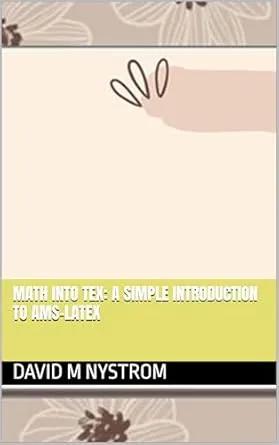Math into TeX: A Simple Introduction to AMS-LaTex
English | July 30, 2024 | ASIN: B0DBQX1S31 | 477 pages | Epub | 545.26 KB
English | July 30, 2024 | ASIN: B0DBQX1S31 | 477 pages | Epub | 545.26 KB
What is 1EX and AMS-D1EX? lEX is a typesetting language created by Donald E. Knuth. Aw-~lEX is a "dialect" of lEX designed by the American Mathematical Society (AW) to facilitate the writing of mathematical articles. Look at the typeset sample article in Aw-~lEX following the Introduction (pages xviii-xx). You do not have to invest much time learning how to produce such highquality typeset articles. In fact, you will be able to begin typing articles after completing PART I. What is the Source File? Think of AW-~TEX as a mark up (or coded) language. The text and the set of codes for an article make up what is called the source file. These codes convey instructions to a typesetting device-instructions as to how to print what has been typed. The coding is actually quite easy to learn. Observe in the abstract of the sample article (page xxii) the instruction (em) for italicizing (emphasizing) the phrase "complete-simple distributive lattice": On pages xxii-xxix we show the source file and the typeset version of the sample article together; the source file is framed. The coding in the source file may appear somewhat bewildering and perhaps even forbidding if you previously worked on a WYSIWIG (what you see is what you get) word processing program. But the typeset article is a rather pleasing-to-the-eye polished version of that same coded material.



